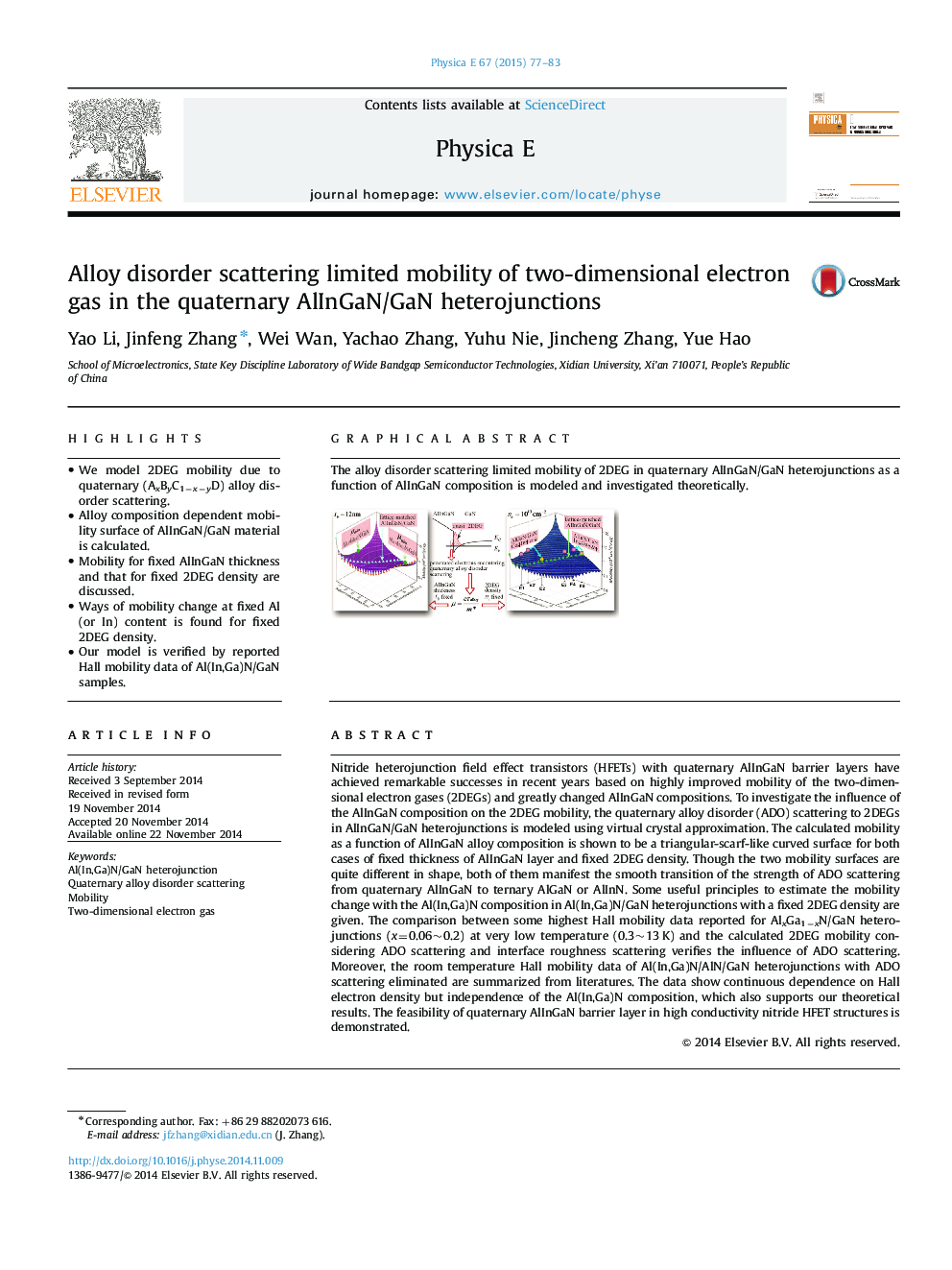| Article ID | Journal | Published Year | Pages | File Type |
|---|---|---|---|---|
| 1544434 | Physica E: Low-dimensional Systems and Nanostructures | 2015 | 7 Pages |
•We model 2DEG mobility due to quaternary (AxByC1−x−yD) alloy disorder scattering.•Alloy composition dependent mobility surface of AlInGaN/GaN material is calculated.•Mobility for fixed AlInGaN thickness and that for fixed 2DEG density are discussed.•Ways of mobility change at fixed Al (or In) content is found for fixed 2DEG density.•Our model is verified by reported Hall mobility data of Al(In,Ga)N/GaN samples.
Nitride heterojunction field effect transistors (HFETs) with quaternary AlInGaN barrier layers have achieved remarkable successes in recent years based on highly improved mobility of the two-dimensional electron gases (2DEGs) and greatly changed AlInGaN compositions. To investigate the influence of the AlInGaN composition on the 2DEG mobility, the quaternary alloy disorder (ADO) scattering to 2DEGs in AlInGaN/GaN heterojunctions is modeled using virtual crystal approximation. The calculated mobility as a function of AlInGaN alloy composition is shown to be a triangular-scarf-like curved surface for both cases of fixed thickness of AlInGaN layer and fixed 2DEG density. Though the two mobility surfaces are quite different in shape, both of them manifest the smooth transition of the strength of ADO scattering from quaternary AlInGaN to ternary AlGaN or AlInN. Some useful principles to estimate the mobility change with the Al(In,Ga)N composition in Al(In,Ga)N/GaN heterojunctions with a fixed 2DEG density are given. The comparison between some highest Hall mobility data reported for AlxGa1−xN/GaN heterojunctions (x=0.06~0.2) at very low temperature (0.3~13 K) and the calculated 2DEG mobility considering ADO scattering and interface roughness scattering verifies the influence of ADO scattering. Moreover, the room temperature Hall mobility data of Al(In,Ga)N/AlN/GaN heterojunctions with ADO scattering eliminated are summarized from literatures. The data show continuous dependence on Hall electron density but independence of the Al(In,Ga)N composition, which also supports our theoretical results. The feasibility of quaternary AlInGaN barrier layer in high conductivity nitride HFET structures is demonstrated.
Graphical abstractThe alloy disorder scattering limited mobility of 2DEG in quaternary AlInGaN/GaN heterojunctions as a function of AlInGaN composition is modeled and investigated theoretically.Figure optionsDownload full-size imageDownload as PowerPoint slide
